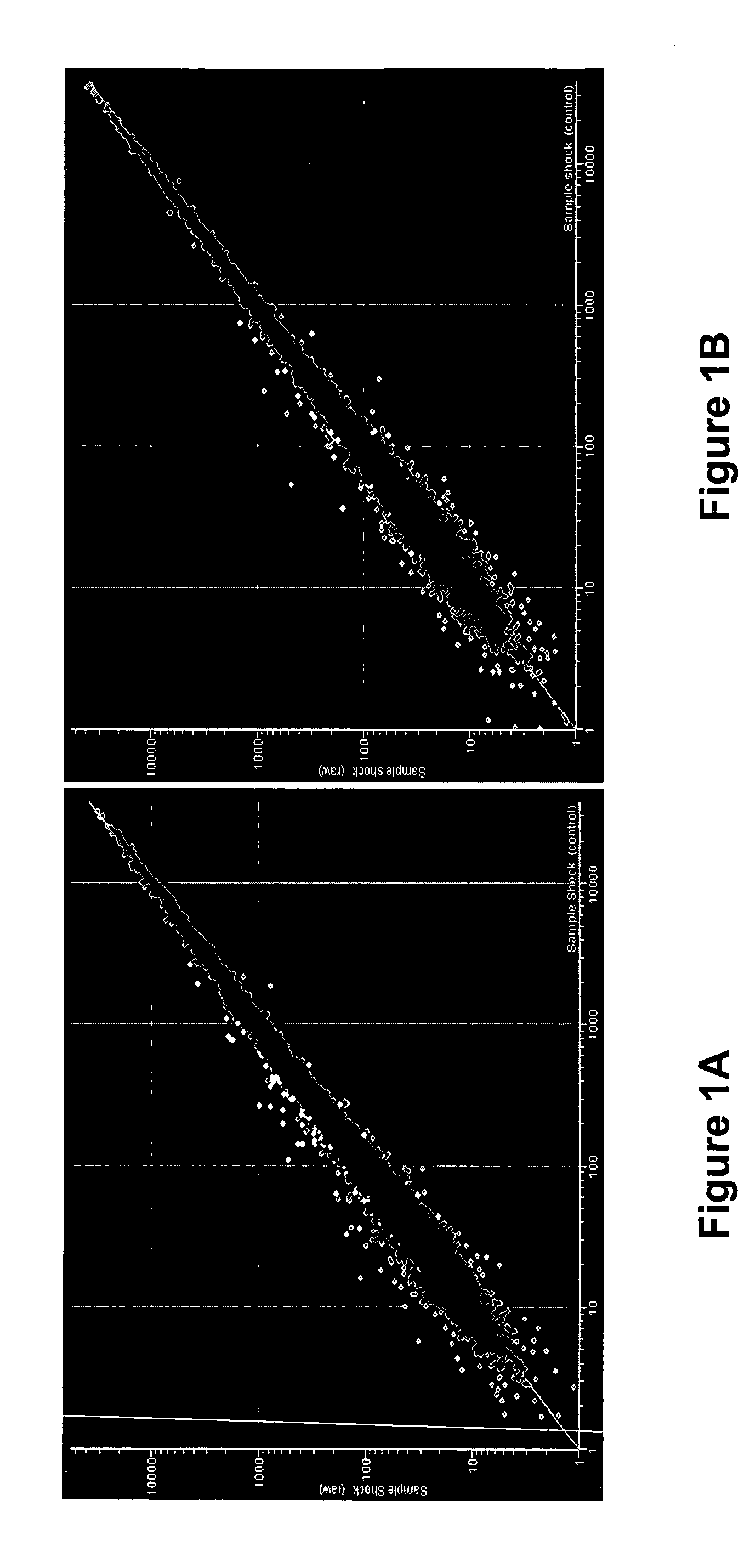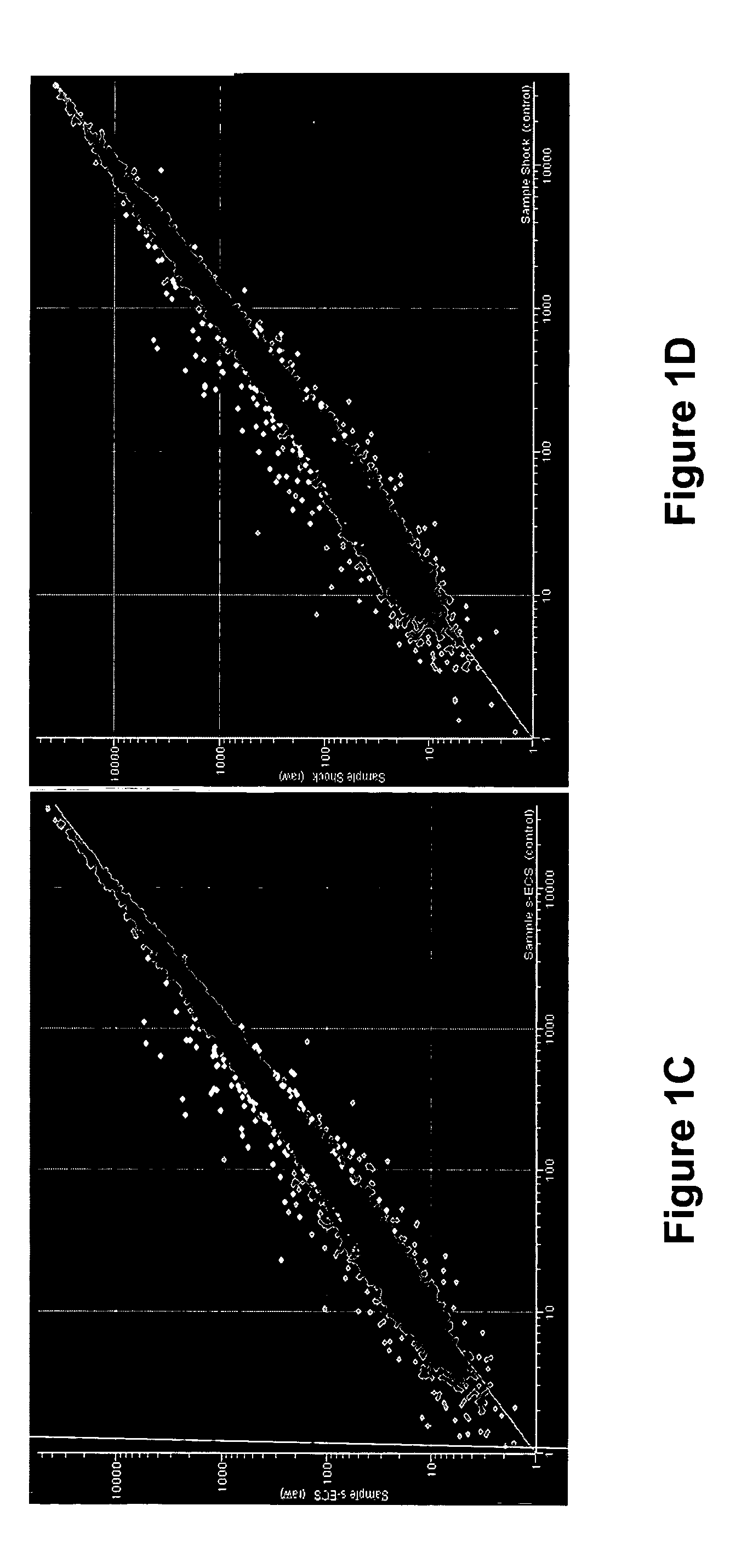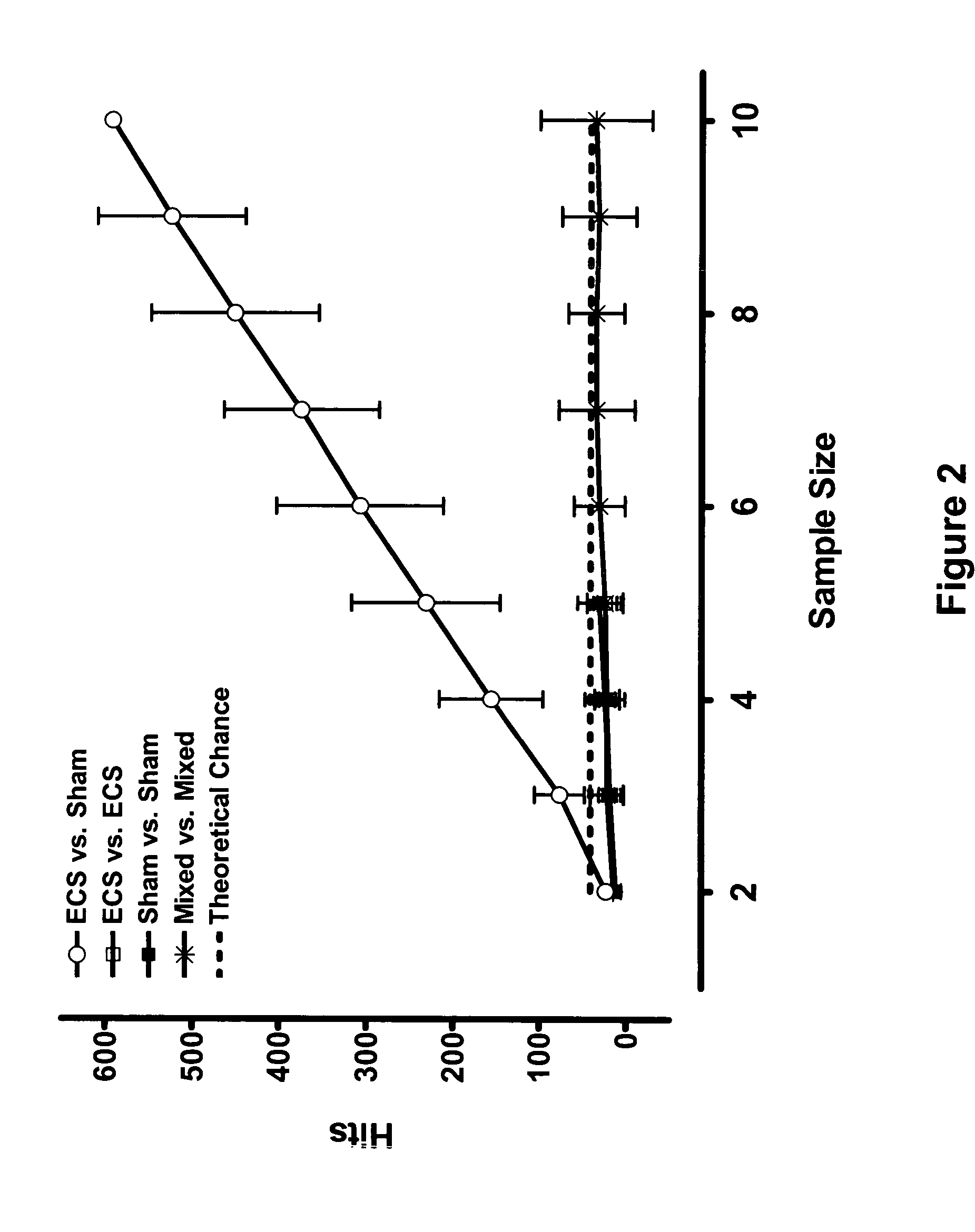0010] The invention also provides ECS gene signatures, which represent collections of one or more ECS signature genes and, preferably, expression levels of these genes which are indicative of ECS or ECT. In additiona, the invention also provides methods and algorithms for identifying ECS signature genes and for selecting preferred ECS signature genes, e.g., for use in an ECS gene signature.
0011] ECS genes signatures of the invention, and the ECS signature genes they comprise, are useful, e.g., for diagnostic and prognostic methods of identifying people who have or who are susceptible to neuropsychiatric disorders, including inter alia major depressive disorder (MDD), bipolar affective disorder (BAD) and psychotic depression. Such methods therefore are also provided and considered a part of the present invention. The invention additionally provides therapeutic methods, which use ECS gene signatures and ECS signature genes to treat, ameliorate or prevent such neuropsychiatric disorders. The invention further comprises screening methods, including MPHTS(G methods, that use ECS gene signatures and / or ECS signature genes to identify compounds that are useful in such methods for treating neuropsychiatric disorders.
0012] The methods of the invention include methods for identifying compounds for treating neuropsychiatric disorders, such as schizophrenia, autism, MDD, BAD, schizophrenia and psychotic depression. These methods generally comprise steps of contacting a cell or cells with a test compound, and determining expression of one or more signature genes by the cell or cells. These signature genes typicaly comprise nucleic acids that hybridize to a nucleic acid selected from the group consisting of SEQ ID NOS:1-152 and the complements thereof. The determined expression of these one or more signature genes is compared to expression of those signature genes in a cell or cell that is not contacted with the test compound. Changes in expression of the one or more signature genes (compared to expression in cells not contacted with the test compound) indicate that the compound is useful for treating the neuropsychiatric disorder.
0013] The invention additionally provides methods for identifying and selecting ECS signature genes. In particular, the invention provides methods for selecting one or more nucleic acids that are indicative of an effective therapy for treating a neuropsychiatric disorder. The method comprises identifying nucleic acids that are differentialy expressed in an individual subjected to electroconvulsive seizure (ECS) compared to an individual not subjected to ECS. In various aspects of these methods, the individual may be subjected to either actue ECS or chronic ECS, and the nucleic acids identified by this method are preferably ones expressed in the brain or in a region of the brain (preferably the frontal cortex or the hippocampus). In preferred embodiments, a score value is obtained for each of the identified nucleic acids. The score value is preferably a function of each gene's differential expression in individuals subjected to ECS and can be determined according to an objective method or algorithm, such as the method set forth in Section 8.2 (infra) for selecting ECS signature genes that are most informative and therefore most useful for the assays and other methods of this invention.
0014] The invention further provides kits for detecting an ECS gene signature. Kits of the invention generally comprise a plurality of oligonucleotides, each of which is capable of specifically hybridizing to a different ECS signature gene. For example, in preferred embodiments the oligonucleotides in such kits are capable of specifically hybridizng to ECS signature genes selected from the genes set forth in the appendix, infra (see, in particular, at Sections 8.3-8.5 below), such as SEQ ID NOS:1-152, as well as homologous and complementary sequences thereof. Preferred kits of the invention may comprise, for example, oligonucleotide probes that are immobilized on a solid surface or support, such as in an expression array. In other embodiments, kits of the invention may comprise a plurality of oligonucleotide primers, more preferably a plurality of primer pairs, wherein each pair is capable of amplifying a particular ECS signature gene (for example in a PCR reaction). Kits of the invention may additionally comprise oligonucleotide primers that are capable of priming reverse transcription reactions, for generating cDNA from mRNAs of one or more ECS signature genes. In still other embodiments, kits of the invention may contain other reagents including, for example, nucleotides that are detectably labeled (e.g., for detecting the amplification and or hybridization of ECS signature genes), polymerases, and / or buffers.
0015] Preferred kits of the invention comprise oligonucleotides that are capable of specifically hybridizing to at least five, and more preferably to at least 10, 15, 20, 25, 30, 35, 40, 45, 50, 60, 70, 80, 90, 100, 110, 120, 130, 140, 150 or more signature genes. In other embodiments, a kit of the invention may comprise oligonucleotides that specifically hybridize to a set of ECS signature genes consisting of 150, 140, 130, 120, 110, 100, 90, 80, 70, 60, 50, 45, 40, 35, 30, 25, 20, 15, 10, 5 or fewer ECS signature genes of the invention.
 Login to View More
Login to View More 


